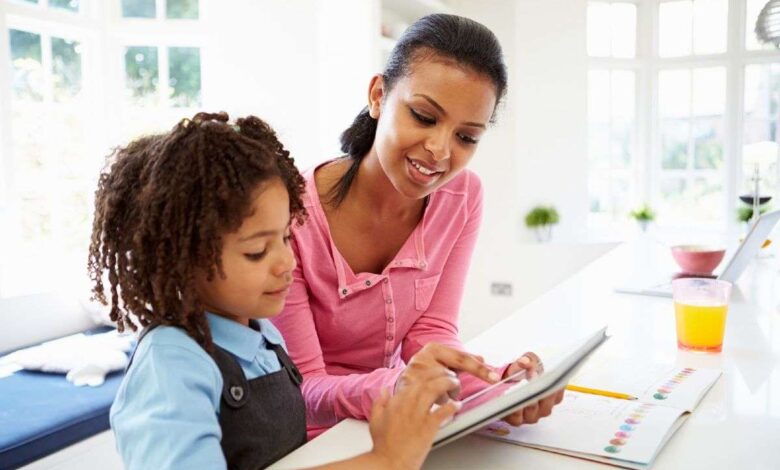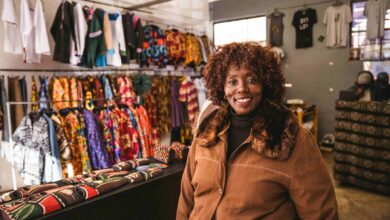3 Tips for Homeschooling during COVID-19

With lockdown being the new norm, many are learning to juggle jobs, kids, partners and parents from the confines of their homes.
It remains uncertain when schools will reopen and some schools are offering schoolwork or running online lessons resulting in countless parents trying their hand at the challenging task of homeschooling whilst keeping a job down… Getting through the schoolwork can be quite daunting but we shouldn’t miss the opportunity to teach our children valuable life and money lessons amid the economic crisis created by the COVID-19 pandemic, says Kenosi Magosha, Head: Client Solutions Savings at Sanlam.
In fact, if this is the time to revisit a new way of living, then there’s all the more reason to use the opportunity to teach our children how to get smart about life, money and saving.
Magosha says teaching children about money management in the context of how life is lived could, in fact, instil a valuable foundation of financial literacy for life. “Talking about money can be taboo and quite challenging, particularly now when there is so much uncertainty on what the future holds. As challenging as it is, given the times we are in, our approach can help with setting up our children, families, communities and country for long-term financial sustainability. Teach the value of each rand by tackling how money is made and also teach them the three S’s of money: Spend, Save, and Share… Spend: how to make the most of limited resources; Save: setting goals for the future; and Share: how to give if you can to help others.”
Magosha provides tips on how to make money management part of the homeschooling ‘curriculum’.
Set a Plan
Set a plan for the three S’s to develop bosses of budgeting. If you are able to, consider paying small sums for extra chores so your children can learn to value what they earn. Help your child to create his or her own budget. Make it collaborative and exciting, and allocate it to what will be spent, saved towards goals, and shared by giving to others. Part of this exercise will require your child to keep track of his or her budget and, when variations arise, to discuss how to make adjustments to get back on track – by earning extra money or revising the budget if no extra money can be earned.
Get Creative
Make more with less and focus on essentials. Government has expressed a view on essential items that can be purchased during lockdown. Smarter spending can also require looking into which of these are needs or wants. The best time to involve your children is when compiling a shopping list which has to work within the family budget – it could account for the other two S’s: Save and Share. They can help to identify needs (things the family cannot do without – for example, food) and wants (things which are nice to have and need to be limited or added less frequently to the shopping list – for example, games and snacks). Younger children can be given magazines to cut out and paste pictures in a book where they sort the items into needs vs wants.
Now is a great time to teach a very valuable lesson: Some of the best things in life are free. So the other way to make more with less – and take the rands further – is doing things which require less or no money: DIY and looking around for things which are offered for free online. For DIY, spend time with your children devising fun – and free – home-based activities together, like outdoor games, making toys out of used boxes and bottle caps, drawing competitions, and more. If you can, make use of free online study materials to supplement school resources and zoom in on financial wellness lessons. Study materials have been developed for parents, caregivers and learners by the Department of Basic Education to assist with learning during lockdown.
Get Savvy with Saving
Ask your children to set a savings goal from the start – to have a cushion for the future or to pay for something special they really want. Then help them to draw up a savings plan. Make it fun. Do the maths to demonstrate that the more chores done combined with smarter spending habits allow for more money to be saved, and the faster the ‘big prize’ will be achieved with some sacrifices and creativity. Make it visual. Consider a transparent money box (reuse a transparent bottle which can be decorated and display a picture of what is being saved for), or an online savings account for an older child where they can also learn how to manage money digitally.
Conclusion
Magosha concludes, “The best learning takes place in day-to-day living and lessons learnt in context. School ultimately helps us to prepare our children to thrive in life. Whilst we may be unqualified to be subject matter teachers, we as parents have the opportunity to use this precious time to teach our children about everyday money lessons whilst at home, and cultivate habits of working and the three S’s of money: Spending, Saving, and Sharing.




